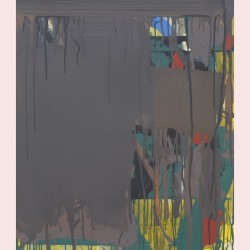Prabhakar Kolte
b 1946
Prabhakar Kolte was born in 1946 in Nerur Par, Maharashtra. He completed his diploma from the Sir J.J. School of Arts, Mumbai in 1968. He also taught there from 1972 to 1994.
Kolte’s works have often been described as abstract, rejecting the visible image in favor of splashes of color, brushstroke, and the image that refuses the name of an actual image.
Kolte has often been called the Indian Paul Klee. Similar to Klee, Kolte also has been seen to use the same technique of weathering his stronger colors and adding white pigment to age the work. He first used this technique with a single, dominant color in the background with lighter colored and geometric yet organic figures placed on it. He further added splashes of color on top of his work claiming the need to cover up any identifiable image.
Painting is highly meditative for Kolte, and he draws inspiration from the commentary on the Bhagvad Gita by the thirteenth century Marathi saint Dnyaneshwar. He eliminates anything representational on his canvases that are instead made up of layers of dripping paint. His work is often dominated by a single hue, like a symphony in colour that hides and reveals layers, and in which architectural or landscape-related forms are sometimes discernible. He experimented with installation and performance art in the early 1980s.
Kolte taught at his alma mater from 1974-94 before quitting to pursue painting fulltime. His first group show was at the Lalit Kala Akademi, New Delhi, in 1972, to mark the silver jubilee of India’s Independence. Kolte lives and works in Mumbai.
